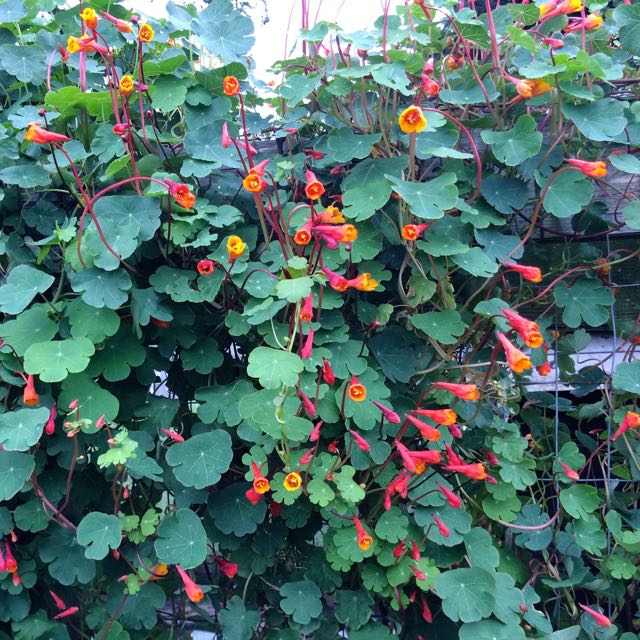
This Christmas we started a new tradition of eating a meal from the garden. It wasn’t as richly diverse as we hope it will be in the future, but it included a root “fruit” that really needs a bit more “press”. Yacon is an ancient Incan food as are Oca and Mashua. I have grown Yacon and Oca for several years now and just found a good source of Mashua so I will be planting it as well.
We had Yacon in our Christmas salad and it added a crisp sweet fresh crunch to it. It’s easily as tasty as an apple or pear or any other common popular fruit. Maybe reminiscent of Jicama. It has taken a bit of work for me to get to a point of being able to enjoy a small harvest. The first year I covered the plant with leaves after it froze back, thinking I could overwinter it in the ground. That year we had a long very cold stretch that turned it all to mush. So I bought some new starts the next spring and that years harvest was eaten by tunneling rats and mice, but I managed to save the small specialized tubers from which the plant grows. Unlike potatoes or sweet potatoes, Yacon grows from a different tuber than the one you eat. Last season I built a big wire basket to grow them in – in the ground – and so this fall I finally got a decent harvest. And oh my goodness, is it delicious! I am determined at this point to make a much more concerted effort to expand this crop. From what I read it is capable of very long storage (8 months or more!) and is a nutritious food to eat; a sweet that is diabetic-friendly and also a source of nutrition for gut bacteria, among other things. The plant is big and showy so you must give it some room. The picture above is of mine last summer. You can see Swiss chard and kale growing at the base of it.

We have had much better success growing Oca, although the tubers rarely get very big, like some I have seen online. The tubers do ALL their growing after the equinox, so it may be they just don’t have enough time before the plants freeze down. Maybe next year I will cover them with floating row cover and see if I can’t keep them growing further into the season.
Oca is a pretty plant. It’s an Oxalis so it is a low growing plant with shamrock shaped leaves that are edible and tart, but tasty in a salad. They grow in the shade here very nicely which is a bonus, because there aren’t that many food plants that can take shade. I also found – accidentally – that I can just leave the tubers in the ground over the winter here. Most instructions for growing them recommend storing tubers indoors in a cool dry place. I have to say, I dearly love food plants that can be stored where they grow to be harvested as needed! But unless you live in zone 7b or 8 it probably wouldn’t work — although I think I might try it with a few under a layer of straw or leaves to see how they do.
The plants have not shown any sign of any sort of insect or disease damage in the 4 years I have grown them here and they don’t seem to need any sort of special care at all. They are one of the simplest food plants I have growing here. I continue to spread them around by planting them in new places each year. Invariably a few tubers get overlooked during any harvest – or are too small to harvest, so they become the starts for next seasons plants.
Oca is a tasty tuber and can be cooked just like a potatoe or eaten raw in a salad – something you can’t do with a potatoe. They are tasty and nutritious and if they are set on a sunny windowsill for a few days they sweeten up – for a whole new taste sensation. Normally they have just a pleasant hint of tanginess.
This year I’m going to be trying Mashua which is a nasturtium relative with large edible tubers. One thing I read is that the ground creatures don’t bother these plants and if grown around a Yacon they may protect it. The tubers of Mashua look a lot like Oca, but are not related nor are they similar in flavor.
These plants are all getting easier to find every year, and with a small number to start you off, in a couple years you will have a decent crop. They are well worth the effort and I have to say it’s lovely to have some permanent food plants that seem to be pretty carefree.


Both plants look like exciting edibles!
LikeLike
They are, actually. They are well worth trying… I can share some oca with you if you would like to try it.
LikeLike
[…] Source: Oca, Mashua and Yacon – The Holistic Garden […]
LikeLike